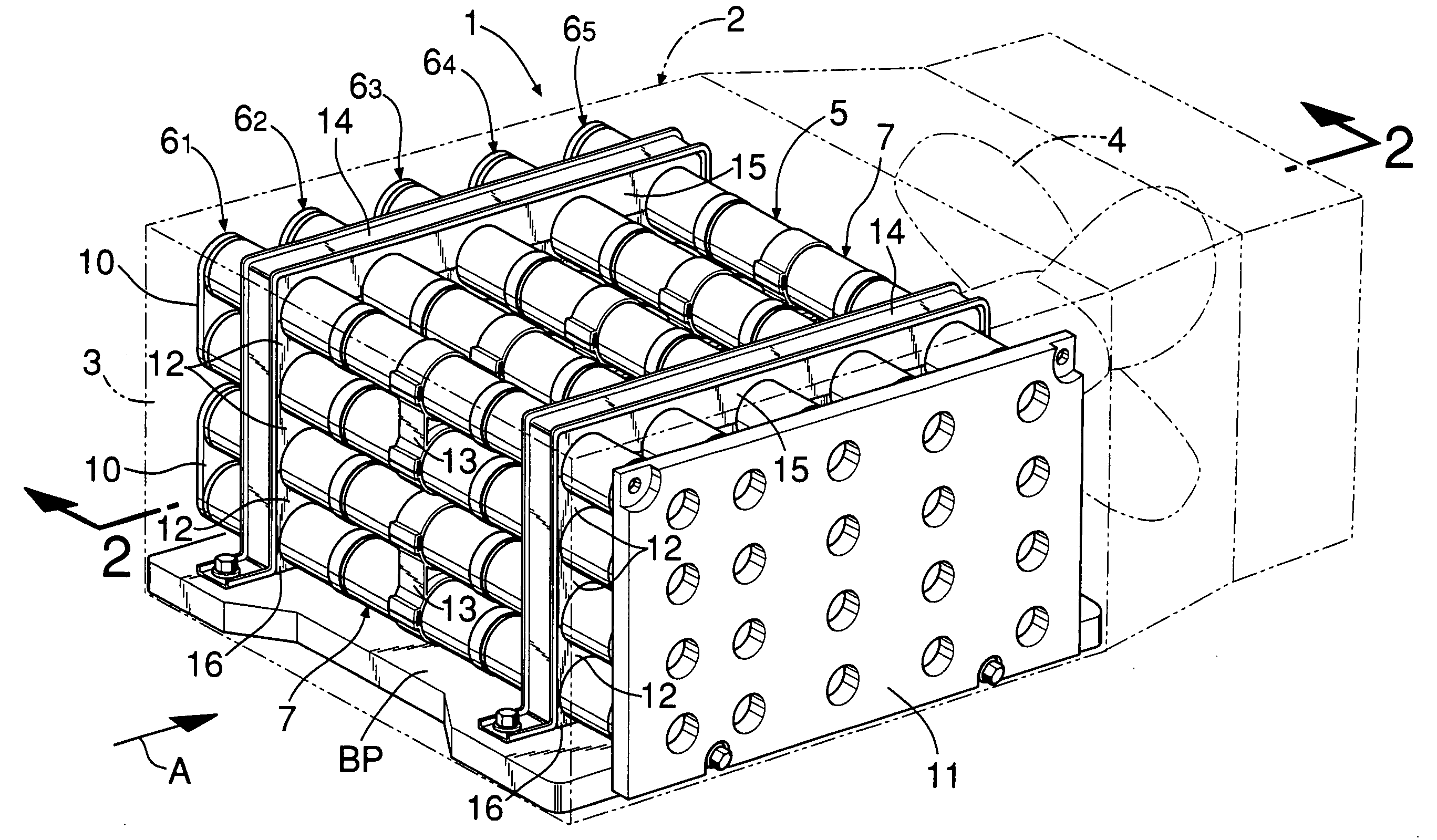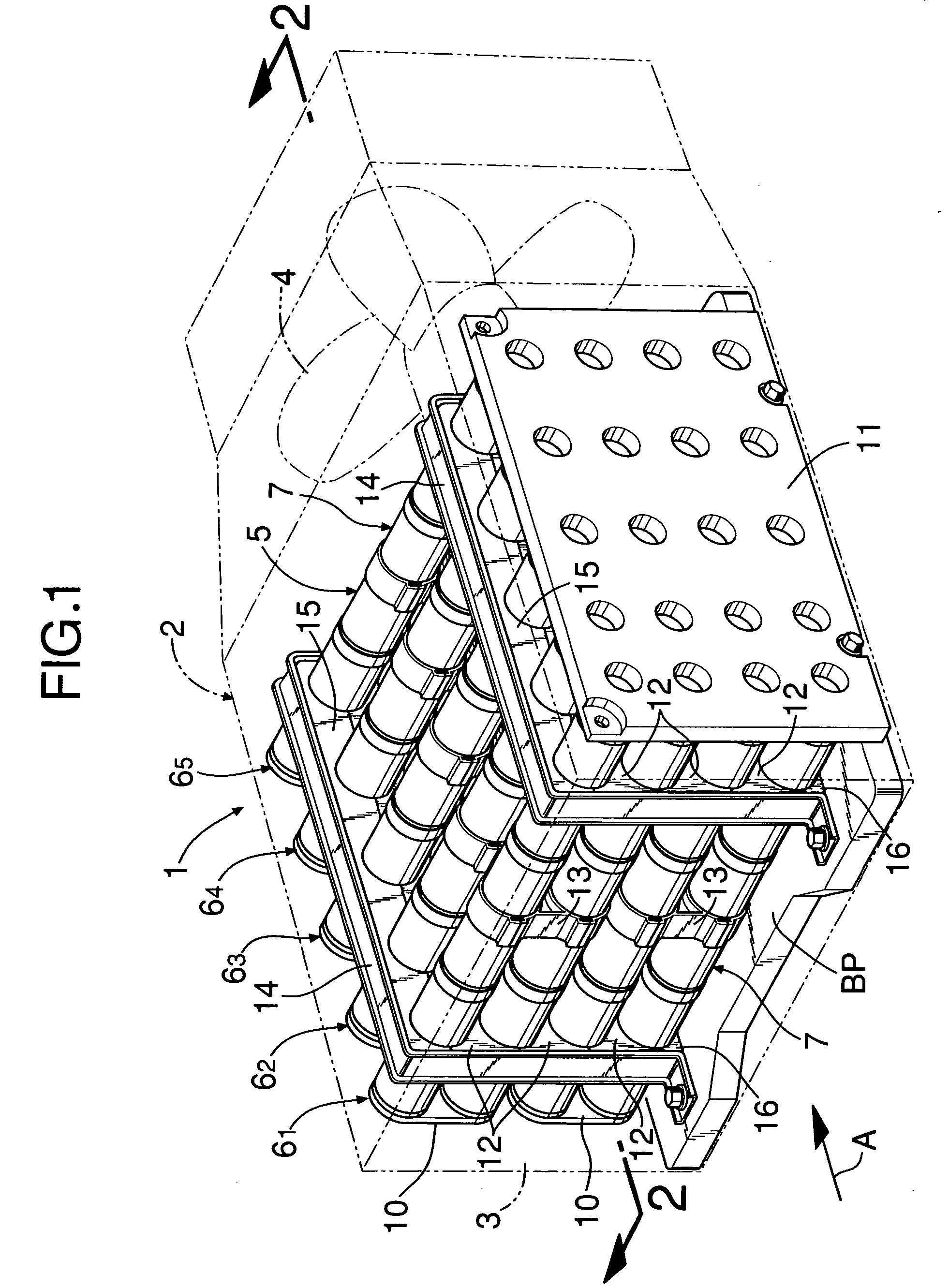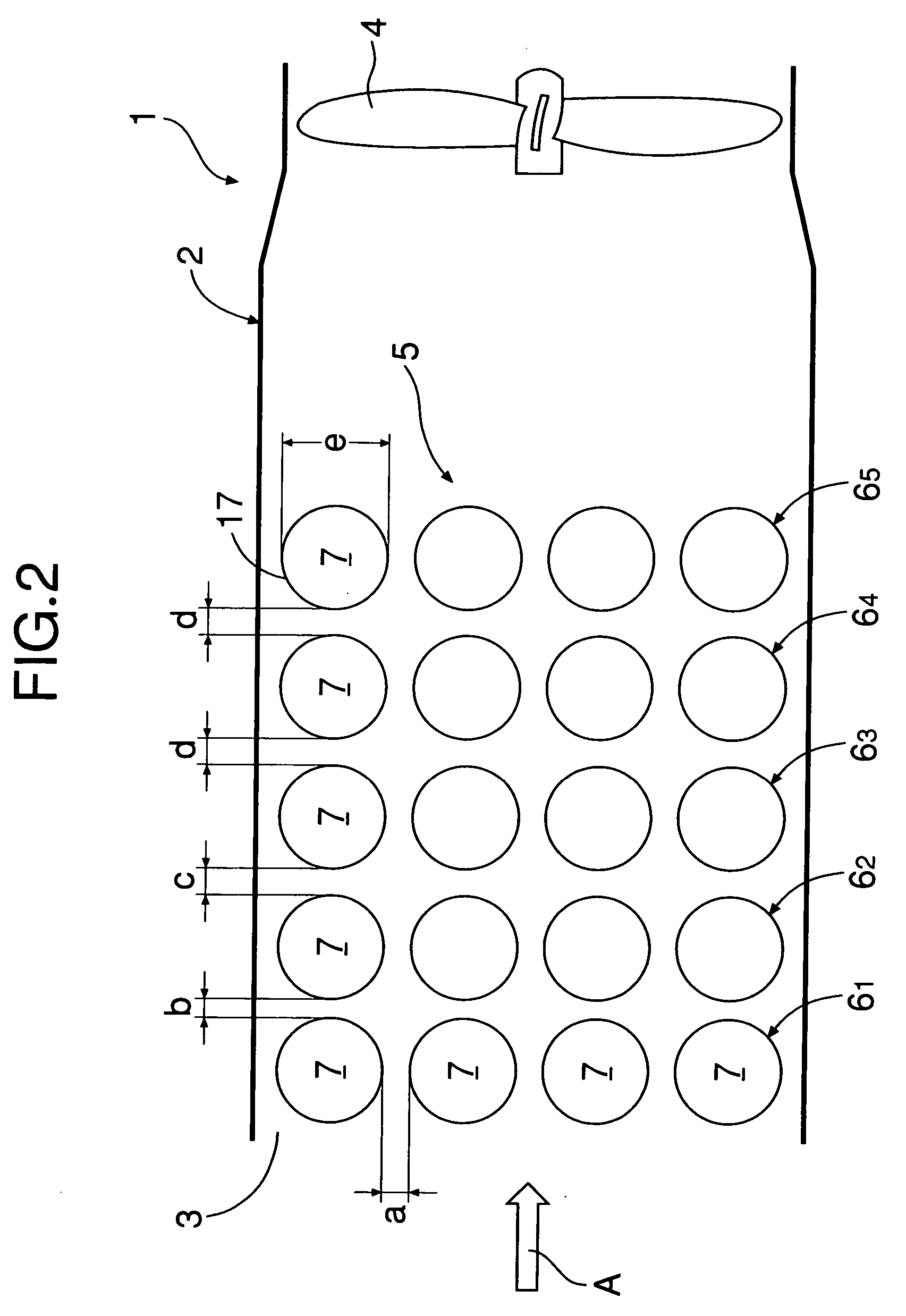Battery-driven power source apparatus
- Summary
- Abstract
- Description
- Claims
- Application Information
AI Technical Summary
Benefits of technology
Problems solved by technology
Method used
Image
Examples
embodiment i
[Embodiment I]
In FIGS. 1 and 2, a battery power supply system 1 includes a synthetic resin box 2, and the box 2 has a cooling air inlet 3 on one end face thereof and a suction fan 4 within a section at the other end (the box 2 can be made of metal). Within the box 2, a battery assembly 5 is housed between the cooling air inlet 3 and the suction fan 4, that is, in an intermediate section within the box 2. The battery assembly 5 includes a plurality, five in this embodiment, of battery module groups, that is, first to fifth battery module groups 61 to 65, which are arranged parallel to each other at intervals along a cooling air flow direction A. As shown in FIG. 3, each of the battery module groups 61 to 65 is formed from a plurality, four in this embodiment, of rod-shaped battery modules 7, which are arranged, within an imaginary plane P1 intersecting the cooling air flow direction A, at equal intervals with the axes thereof intersecting the cooling air flow direction A. The axes o...
embodiment ii
[Embodiment II]
In FIGS. 8 and 9, a battery power supply system 1 includes a synthetic resin box 2, and the box 2 has a cooling air inlet 3 on one end face thereof and a suction fan 4 within a section at the other end (the box 2 can be made of metal). Within the box 2, a battery assembly 5 is housed between the cooling air inlet 3 and the suction fan 4, that is, in an intermediate section within the box 2. The battery assembly 5 comprises a plurality, five in this embodiment, of battery module groups, that is, first to fifth battery module groups 61 to 65, which are arranged parallel to each other at intervals along a cooling air flow direction A. As shown in FIG. 10, each of the battery module groups 61 to 65 is formed from a plurality, four in this embodiment, of rod-shaped battery modules 7, which are arranged, within an imaginary plane P1 intersecting the cooling air flow direction A, at equal intervals with the axes thereof intersecting the cooling air flow direction A. The axe...
PUM
 Login to View More
Login to View More Abstract
Description
Claims
Application Information
 Login to View More
Login to View More - R&D
- Intellectual Property
- Life Sciences
- Materials
- Tech Scout
- Unparalleled Data Quality
- Higher Quality Content
- 60% Fewer Hallucinations
Browse by: Latest US Patents, China's latest patents, Technical Efficacy Thesaurus, Application Domain, Technology Topic, Popular Technical Reports.
© 2025 PatSnap. All rights reserved.Legal|Privacy policy|Modern Slavery Act Transparency Statement|Sitemap|About US| Contact US: help@patsnap.com



